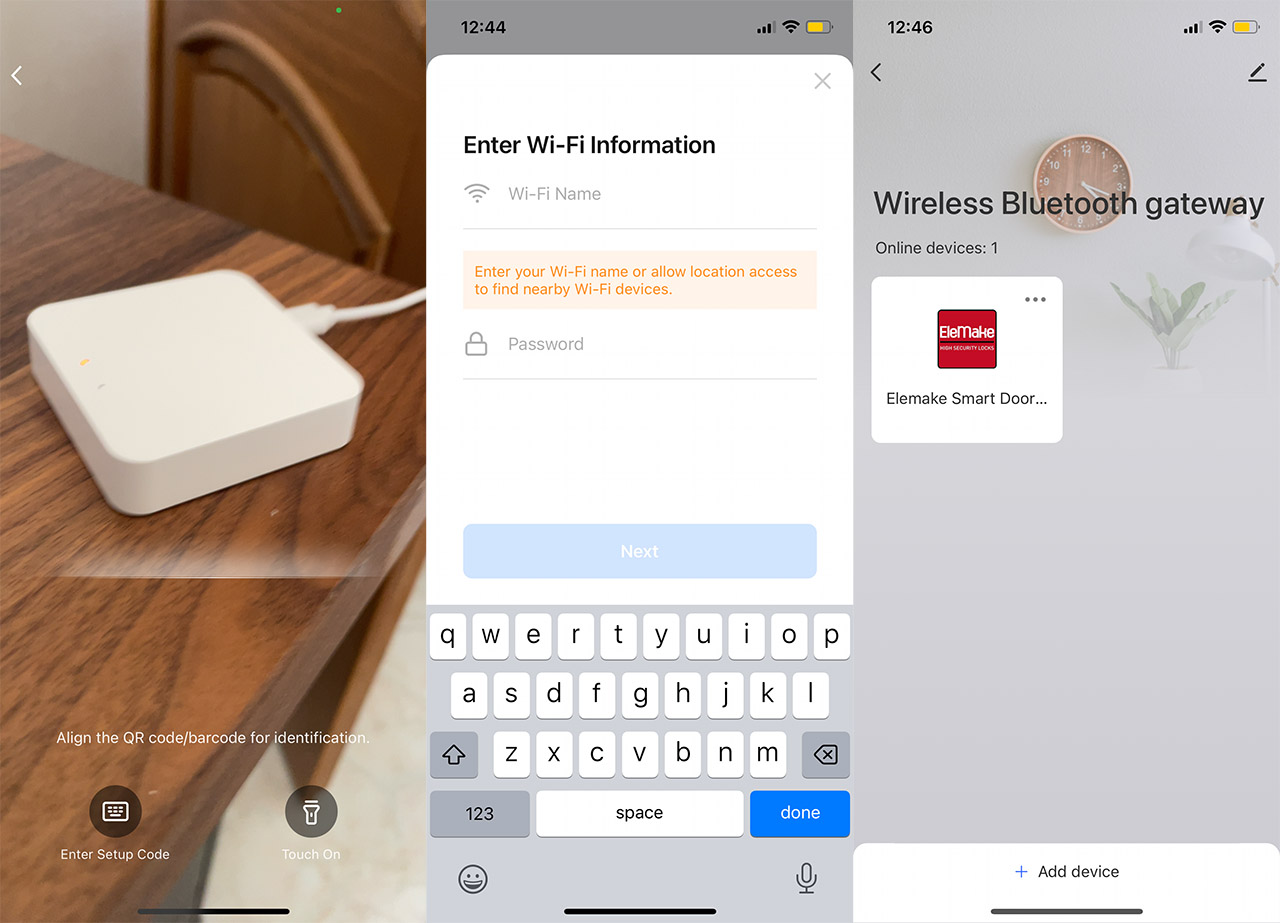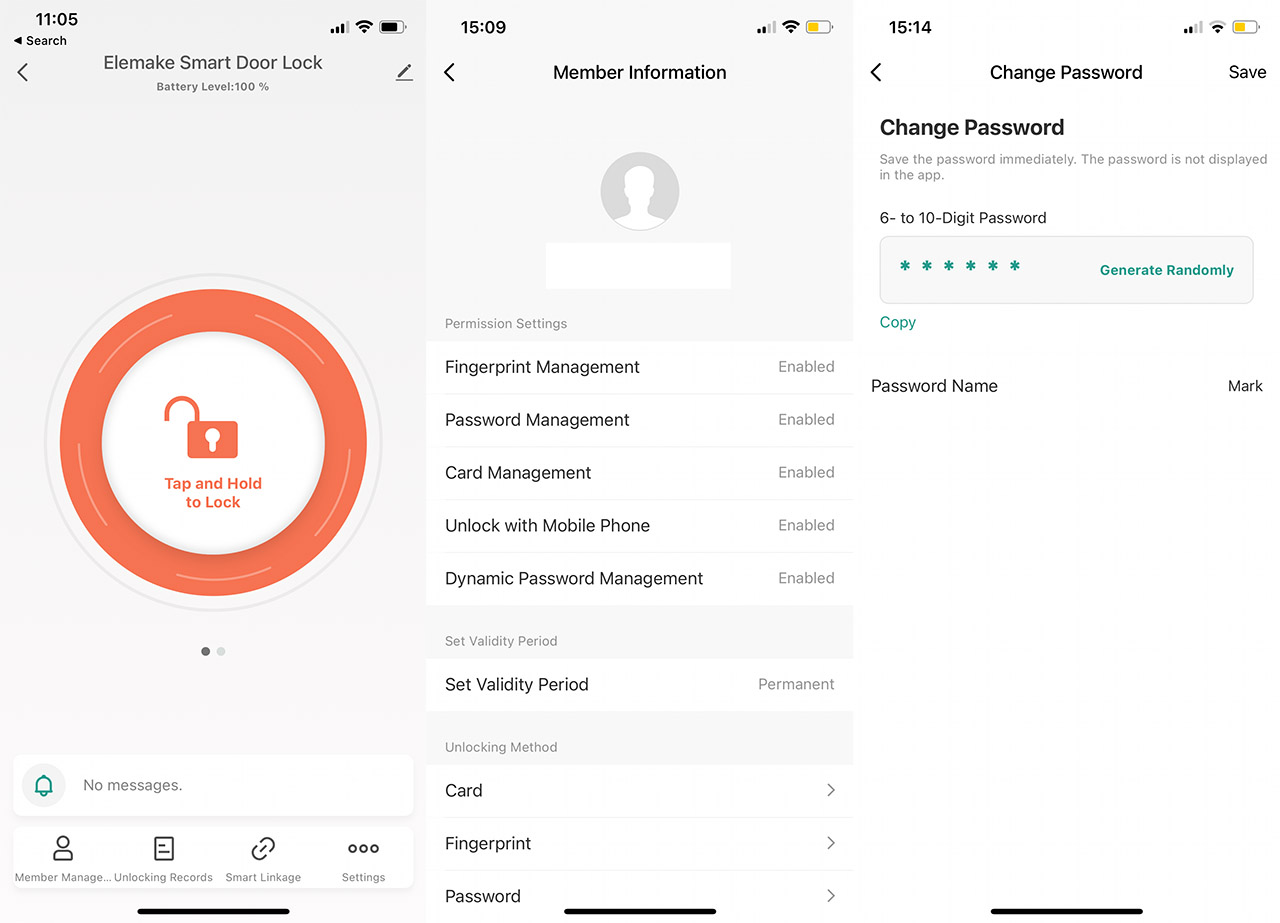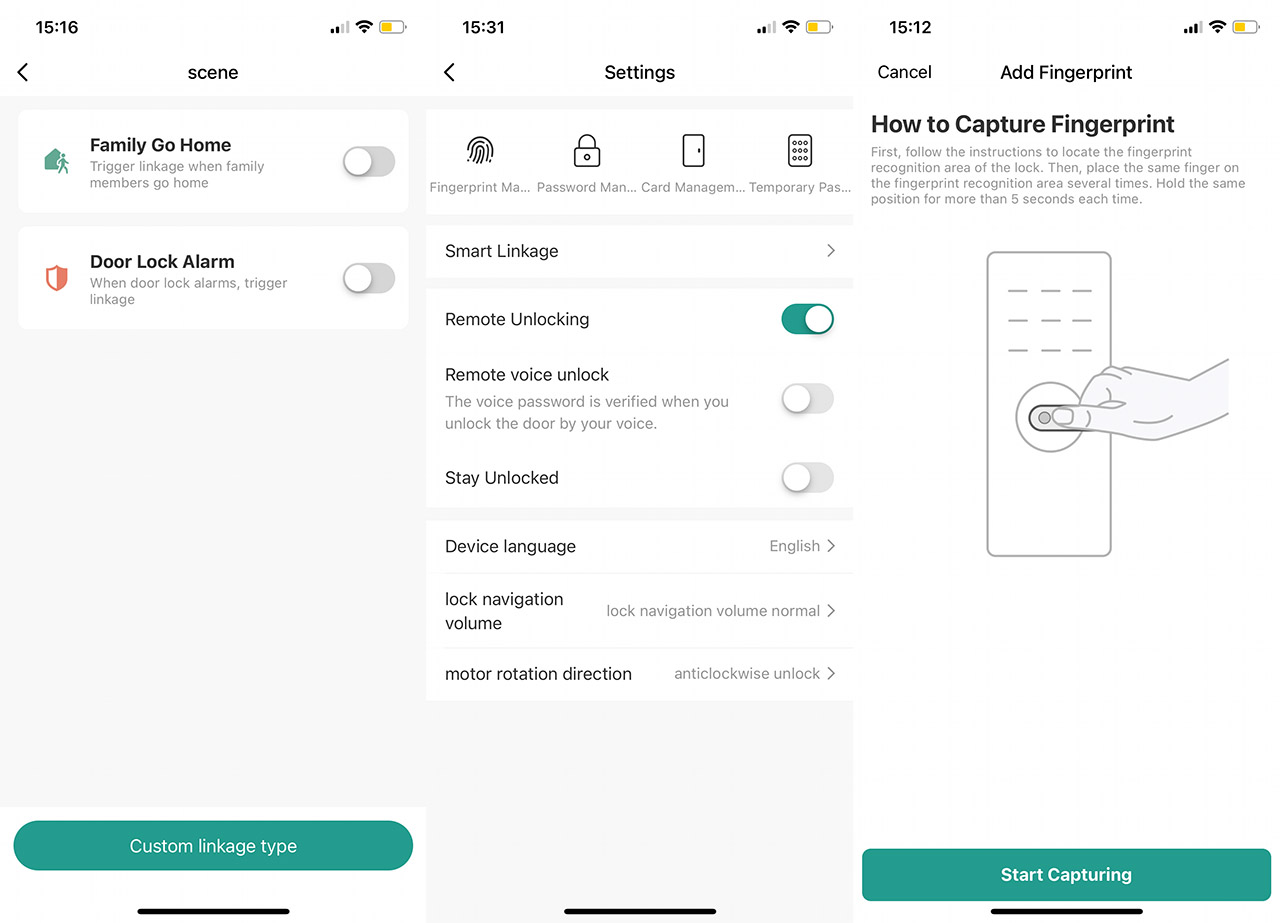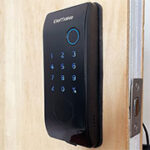Tap to add the unit and that’s about it. But, we also have the gateway unit that can be added and, after powering it up, the two LEDs should light up, one blue and the other red (if the blue LED is turned off, then press and hold the side button for a few seconds). As for the distance to the Elemake smart door lock, I kept the gateway fairly close, at about 3 feet, but it was quite far from the router (40 feet away) – be aware that the Bluetooth range is about 30 feet with a low amount of interference.

Going back to the app has immediately revealed the device and after tapping on Add, I was asked to enter the WiFi SSID and password (this can be an automated process as long as the user gives it access to the location – I did not). Make sure that you enter the credentials to the 2.4GHz network and then, a few seconds later, I gained access to the gateway’s dedicated interface. Here, I was given two options, one to Add an existing device or scan for a new one. I chose the former and it quickly identified the Elemake Smart Door Lock. The rest is the same as when the unit was connected via Bluetooth.
The Mobile Application
Let’s first talk about the layout of the interface a bit. At the top, there’s the battery level, while in the middle, occupying most of the window is the Tap and Hold to Unlock (or Lock) and if you swipe left, there’s the option to Obtain Dynamic Password. What this does is to create a unique, one-time password which will last for 5 minutes, and will allow you to get into the house in case you forgot the passkey you set before.

A bit lower, we can see any new messages (notifications) and then, it’s possible to access the Member Management tab where you can set the Permission Settings, the Validity (very useful if we’re talking about guests or AirBnB), as well as the Unlocking Method. Nothing is set by default, so you do need to tap on each method and add it to the user. For example, I added a card and the process was easy – just keep the card next to the Elemake smart lock and it should be detected and added automatically. The fingerprint method involves a similar system to when one sets up the smartphone fingerprint, but it is wise to add several fingers – our future self will thank you for it.
The next main section is the Unlocking Records (logs activities), followed by Smart Linkage (create scenes with inter-connected devices). Lastly, there’s the Settings tab where it’s important to access the ‘motor rotation direction’ and change it accordingly.
I say that because for me, initially, the locking action would unlock the door and vice versa. Other available settings include the possibility to enable the Remote Unlocking, as well as the Remote voice unlock (it will require a spoken password), the option for the door to Stay Unlocked, and the user can also adjust the volume of the voice (that speaks when you do any action to the Elemake smart lock).

The Elemake Smart Door Lock Performance
After installing the Elemake smart door lock and adding three types of unlocking mechanisms, let’s see how well the device actually performs. The first thing that I need to mention is that the locking and unlocking the door manually (with the key) feels very smooth, with no points of resistance. But the question is whether you can create new keys or even use your own keys? You cannot re-key the lock, but you can make a few new copies for the keys, just be aware that it may require a few additional adjustments to fit into the lock.
As for the touchpad, you get LEDs for each key and they’re reactive, just make sure to not have wet fingers or gloves – also I noticed that the 0 is a bit harder to activate for whatever reason. Using the cards was easy and the lock would activate every time, but I was wondering more about the fingerprint performance. As you can see from the video, it is working fine even if my finger is set in different positions, and the only time it failed was when I touched the finger only partially. So, to avoid the possibility that the reading fails, make sure to properly put the finger in the designated area. So, the mechanical part is fine and I had no issue using the provided options for locking or unlocking the device, but I did often hear that the voice prompt would mention that the Bluetooth is disconnected.
What was weird is that it wasn’t disconnected at all and I could use the app to lock or unlock the smart deadbolt. But, before it performed the required action, it just had to let me know that the Bluetooth connection is no longer active, even though it was. That being said, I could easily use the app to control the Elemake smart door lock, even remotely, and yes, it is possible to control the device via voice as well. But, just like all other smart locks out there (including the SwitchBot Lock), you will have to shout out a PIN code to Alexa or Google Assistant in order for the action to register.
So, you not only lose privacy to extra tech giants, your neighbors will also know how to lock or unlock your house. That’s excellent! Since we talk about privacy, the Tuya platform is compatible with the Home Assistant, and even if it’s not really perfectly disconnected from the mothership servers, you still get a less intrusive smart home experience.
The Conclusion
The Elemake smart fingerprint door lock with deadbolt is proof that you don’t need to cut any corners in order to both compete with the more expensive options out there and to maintain a budget-friendly price tag. The unit is well built (mostly metallic), the locking mechanism is smooth and there are multiple ways to lock and unlock the door. You can use the app, voice, a fingerprint, a PIN code, a card and even the physical keys. I guess the only gripe I have with this smart lock is that I would have liked to see the door position sensor and the gateway integrated into the device itself. But other than that, the Elemake smart door lock is clearly the best option in its price range.
Elemake Smart Door Lock
-Pros
- Excellent build quality
- Multiple ways to lock/unlock the door - fingerprint, card, PIN, voice, app and keys
- Inner battery for when the batteries get depleted
- IP65-rated
- Fairly easy to install
Cons
- The cover for the keyhole can easily fall out when the door is slammed
- The striker plate is fragile
- I would have liked for the gateway and the door position sensor to be an integrated part of the device

Mark is a graduate in Computer Science, having gathered valuable experience over the years working in IT as a programmer. Mark is also the main tech writer for MBReviews.com, covering not only his passion, the networking devices, but also other cool electronic gadgets that you may find useful for your every day life.

